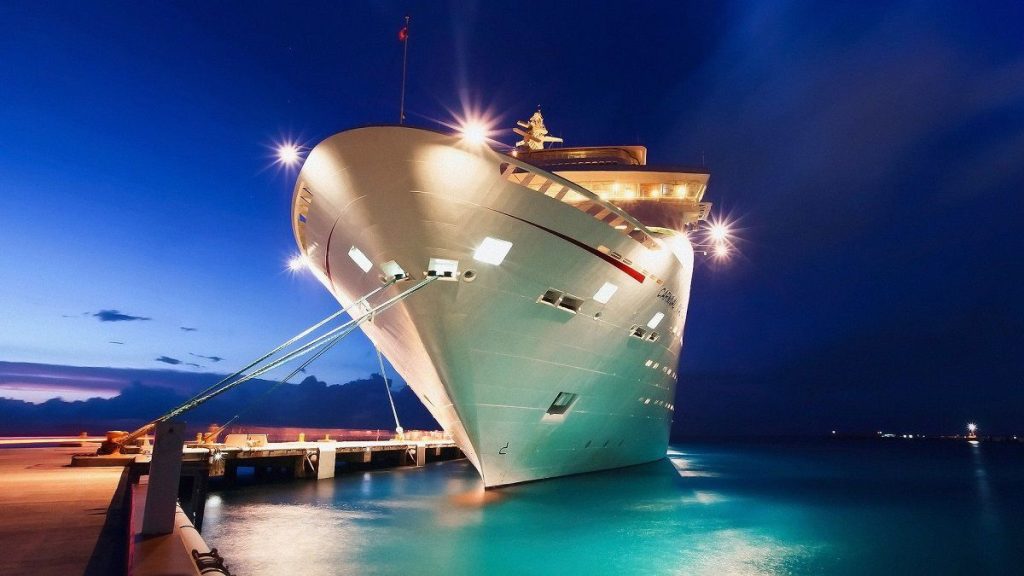Navigation lights are used to prevent collisions at night or in times of reduced visibility, and are an essential tool in keeping you and your vessel safe. Nav lights allow you to see other nearby vessels, and allow other vessels to see you.
Nav lights also provide information about the size, activity, and direction of travel. By understanding the characteristics of Nav lights, you can determine an appropriate course of action as you approach another vessel.
On any vessel, navigation lights have a specific color, (white, red, green, yellow, blue), arc of illumination, range of visibility, and location, as required by law and regulations. For the purposes of this course, we will concentrate on pleasure boats under 65 feet in length. Knowledge of navigation lights is important to a small-boat skipper for separate, but important, reasons.
- You are legally responsible for displaying lights of the proper color, intensity, location and visibility on your boat.
- You are required to display the appropriate lights at night or during times of reduced visibility.
- Knowing the type and heading of another boat.
Legal Requirements
Vessels are required to show the proper navigation lights from sunset to sunrise in all weather conditions, good and bad. During these times, no other lights that could be mistaken for lights specified in the Rules of the Road can be displayed, nor any lights that impair the visibility or distinctive character of navigation lights, or interfere with the keeping of a proper lookout. The Rules also state that navigation lights must be shown in conditions of reduced visibility, and may be shown at other times considered necessary.

It is the responsibility of the owner/operator of a vessel that she show the proper navigation lights for her size and the waters in which she is operating. It is not the responsibility of the manufacturer, importer, or selling dealer. Many boats are delivered with lights that do not meet legal requirements with respect to technical characteristics or placement on the vessel. Remember also, that the angles of visibility must be met when the boat is underway-if your boat rides at a significant bow-up angle, take that into consideration when installing and/or checking your lights.
Navigation Lights for Powerboats
Power driven vessels underway shall exhibit a masthead light forward, sidelights and a stern light. Vessels less than 12 meters in length may exhibit an all around white light and side lights. Power driven boats on the Great Lakes may carry an all around white light in stead of a second masthead light and stern light combination.

Sidelights – Colored lights – red on port and green on starboard – showing an unbroken arc of the horizon of 112.5 degrees, from dead ahead to 22.5 degrees abaft the beam on each side.
Combination lights – Sidelights may be combined in a single fixture carried at the centerline of the vessel.
Stern light – A white light showing over an unbroken arc of the horizon of 135 degrees, centered on dead astern.
Navigation Lights for Sailing

A sailing vessel of less than 7 meters in length shall, if practicable, exhibit regular navigation lights, but if not practical, she shall have ready at hand an electric torch or lantern showing a white light which shall be exhibited in sufficient time to prevent collision.
Diving Lights
Another light display that you may see in resort areas, or waters that have wrecks or reefs, is the night diving configuration. This has three vertical masthead lights, that have a red-white-red sequence. You must maintain a good distance from these vessels, and you should also be aware that there may be divers near you.
Interpreting what you see

It’s great that you’re learning the basics of lights – what is required and when they’re required. But, this in only the beginning. You must also learn how to interpret the navigation lights that you see when you are underway at night- and for your safety-learn it well.
For instance, if you see a vessel approaching that shows a light pattern such as the ones to the right, you immediately know that you are in a crossing situation, and that you must yield to the other vessel – that’s why it is red.

Seeing a green light over a white light indicates a fishing vessel actively trawling. You not only need to avoid the vessel, but you also need to remember that it could potentially have a very large net deployed that you will also need to avoid.
And there are numerous other lights and combinations of lights that you must be able to instantly recognize – the lights for a sailboat that is privileged over a motorboat, the special lights of various fishing vessels, a dredge or a vessel not under command. Study the requirements for navigation from the viewpoint of a “looker” as well as a boat owner.



Comments are closed